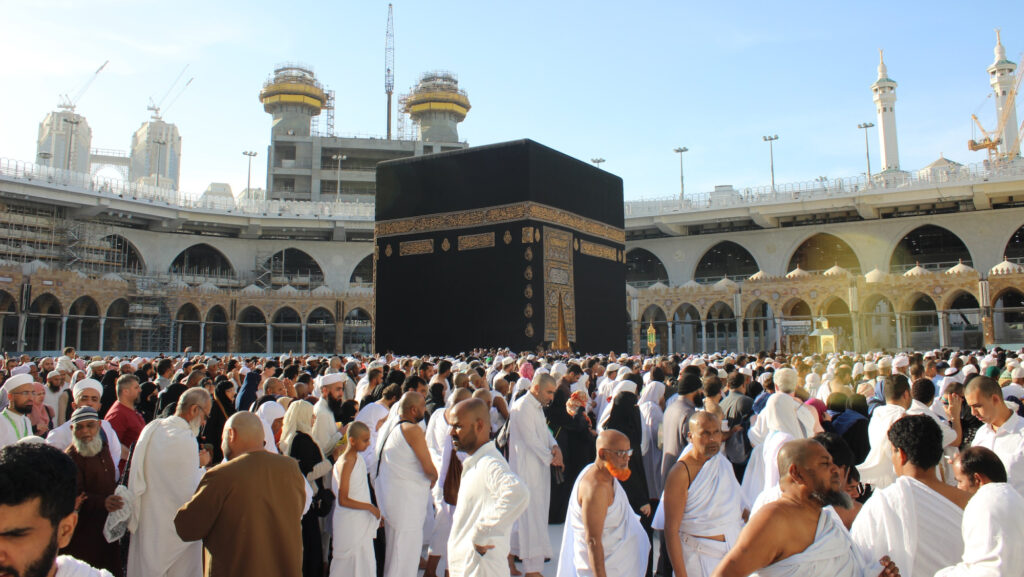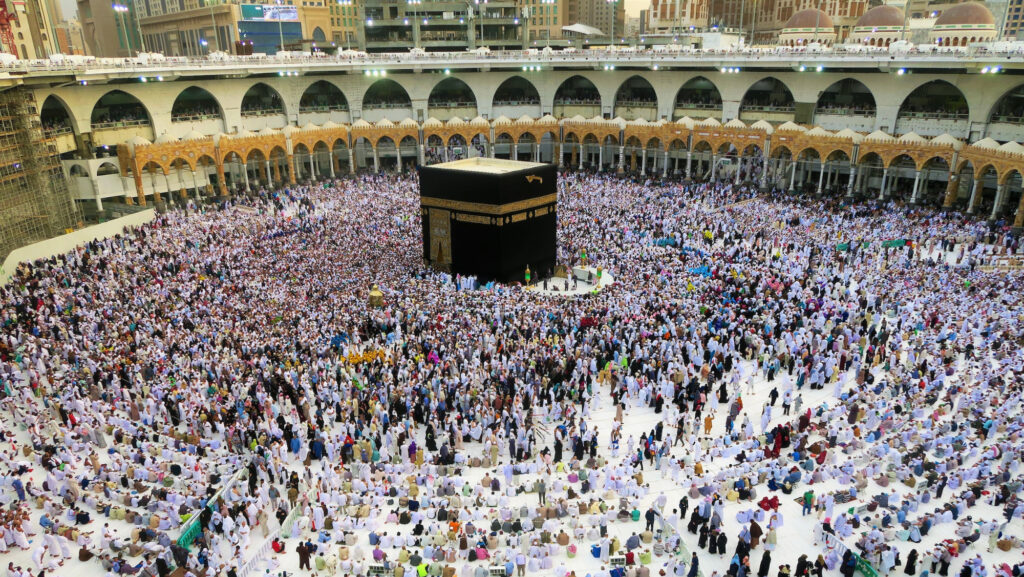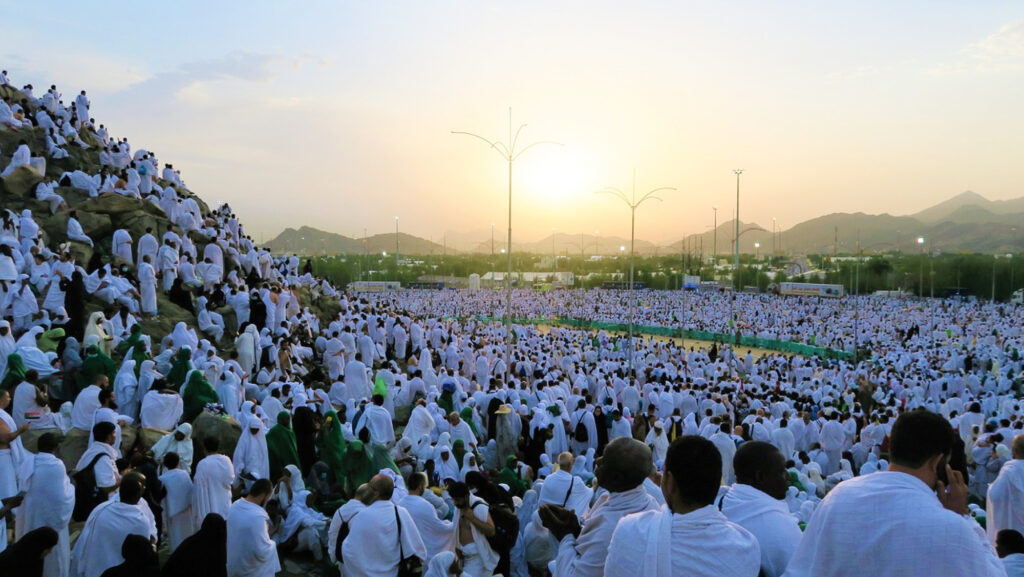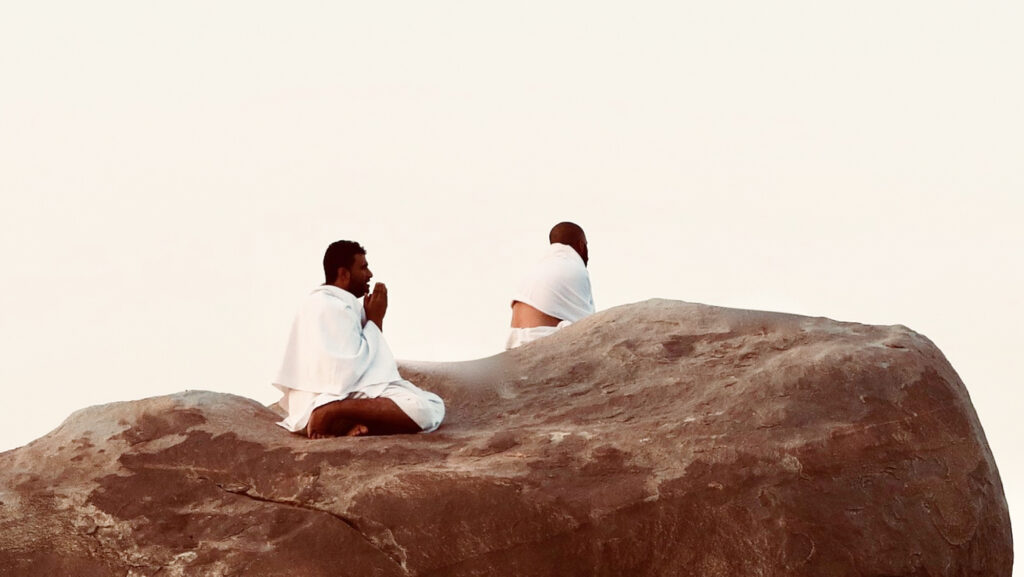The Compelling History of Hajj Pilgrimage

Have you ever wondered where the powerful rituals of Hajj come from? This sacred journey didn’t begin recently; it dates all the way back to Prophet Ibrahim (AS) and was later revived by Prophet Muhammad ﷺ. Every step of Hajj carries deep meaning, rooted in faith, sacrifice, and submission to Allah.
Hajj is one of the five pillars of Islam, a once-in-a-lifetime obligation for those who are able. Each year, millions of Muslims from around the world gather in Makkah, seeking Allah’s mercy and fulfilling this incredible act of worship. And the reward? Nothing less than Jannah.
In this article, we’ll take you through the rich history of Hajj — how it all began, how the rituals were shaped, and why this journey holds such a special place in every Muslim’s heart.
What is Hajj?
Hajj is one of the five Pillars of Islam and is obligatory for physically able-bodied Muslims who can afford it. This annual Islamic pilgrimage is held in Mecca, Saudi Arabia. The word “Hajj” itself means “to intend” or “to set out for a definite purpose.”
Hajj consists of several activities like Niyyah (intention), wearing the Ihram, spending nights in Mina, performing Tawaf of the Kaaba (Masjid al-Haram), proceeding Safa and Marwa hills, standing in the plain of Arafah, and a few more activities.
When is Hajj 2025?
Hajj is observed in the last month i.e. Dhul Hijjah in the Islamic calendar. So, how long is Hajj? The rituals of Hajj are spanning five days period every year between the 8th and 13th of Dhul Hijjah.
In 2025 Hajj begins on the 4th of June (Wednesday) and lasts on the 9th of June (Monday).

Why Is Hajj Important?
Hajj is important for Muslims for many reasons such as-
1. Performing Hajj is a Command of Almighty Allah
Hajj is an obligatory Islamic event for Muslims who are financially able to do it. Allah Subhanahu wa Ta’Ala says in the Quran,
“Performance of Hajj (pilgrimage) to this House is a duty to Allah for all who can afford the journey to it; and the one who disobeys this commandment should know that Allah is Self-sufficient, beyond the need of anyone from the worlds.” [Sura Aal-e-Imran, verse 97]
2. Hajj is a Fundamental Pillar of Islam
Hajj is one of the five pillars of Islam and is supported by the following hadith-
It is narrated by Ibn Umar (RA) that the Prophet Muhammad ﷺ said, “Islam is built upon five: the testimony that there is no deity worthy of worship except Allah and that Muhammad is the Messenger of Allah, establishing the prayer, giving the Zakat, pilgrimage to the House (i.e., the Kaaba), and fasting the month of Ramadan.” [Sahih Bukhari, Sahih Muslim]

This hadith clearly mentions that the pilgrimage to the House (Kaaba), which refers to Hajj, is one of the foundational pillars of Islam. So, fit and affluent Muslims must perform Hajj once.
3. Hajj Teaches us to Sacrifice
The origin of Hajj is nothing but the story of the sacrifice of the Prophet Ibrahim (AS). When Allah (SWT) asked for any sacrifice he (AS) did it instantly. Thus, Allah become satisfied with his worship and made his sacrifice example for us to be followed.
4. Way of Forgiveness and to Get Closer to Allah
The Messenger of Allah ﷺ said: “When a believer returns home after performing Hajj, he is as he was on the day which his mother gave birth to him.” [Sahih Bukhari]
Hajj cleanses all the sins of those who take part there (if Allah grants it). It also strengthens the spiritual connection to Allah.
5. Remembrance of the Hereafter
Hajj serves as a reminder of the temporary nature of worldly life and makes us focused on the ultimate goal of attaining salvation in the Hereafter. The rituals and the collective experience of Hajj reinforce the belief in the Day of Judgment and the accountability of one’s actions.

6. Unity of Muslim Ummah
Hajj serves as a remarkable manifestation of the unity and brotherhood of the Muslim Ummah. Muslims from all walks of life, regardless of their nationality, ethnicity, or social status, gather in Mecca as equals, dressed in simple white garments, affirming the principles of equality and unity.
What is the Beginning Story of Hajj?
The sacrifice, trials, and tribulations of Prophet Ibrahim (AS) are the background events of Hajj. Following the story, our Prophet Muhammad ﷺ taught us the right rituals of Hajj in Farewell Hajj.
Let’s know the root of the Hajj from the beginning.
i. Hajj and Prophet Ibrahim (AS)
The story of Hajj centres around the trials and devotion of Prophet Ibrahim (AS). Ibrahim (AS) got married to Sarah (AS), but they didn’t have any children even though they reached almost old age. Sarah (AS) offered Prophet Ibrahim (AS) to marry her servant Hajar also known as Hagar (AS). Then Hajar (AS) gave birth to Ismail (AS). After that Allah (SWT) tested Ibrahim (AS) again with his son and wife (Hajar) which we should know to explore the origin of Hajj.
a) Hajar (AS) and Ismail (AS) in the Desert of Mecca
Allah commanded Ibrahim (AS) to take his wife Hajar (AS) and infant son Ismail (AS) and left them in the barren desert valley of Mecca. Prophet Ibrahim (AS) followed Allah’s command and departed them to the barren land of Mecca. The site was near the sacred house of worship Kaaba which was built by Ibrahim (AS) and Ismail (AS) later on.
As Ibrahim (AS) prepared to depart, Hajar (AS) asked him why he was leaving them in such a desolate place. Prophet Ibrahim (AS) replied this is the commandment of Allah. But Almighty Allah has a great plan behind this that we can’t think of in a normal sense.
With limited supplies, Hajar (AS) and Ismail (AS) faced immense challenges in the harsh desert environment. Soon, they ran out of water, and Ismail (AS) became thirsty. In desperation, Hajar (AS) searched for water, running back and forth between two hills, Safa and Marwa, hoping to find help or a source of water.
Allah (SWT), seeing Hajar’s devotion and struggle, caused a miracle to occur. He sent the angel Jibril (AS) to strike the ground with his wing, causing a spring of water to gush forth. This blessed spring, known as Zamzam, quenched the thirst of Ismail (AS) and became a source of sustenance for Hajar (AS) and future generations.
Hajar (AS) and Ismail’s (AS) presence in the barren desert attracted the attention of passing tribesmen, who settled in the region over time. The settlement eventually grew into the city of Mecca, which became a significant center for trade and, most importantly, the birthplace of the Prophet Muhammad ﷺ.
The story of Hajar’s (AS) unwavering faith and perseverance serves as a reminder of the importance of trust in Allah and the power of sincere prayer. Allah (SWT) liked these devotions so much that He included these rituals for Hajj, such as running between the hills of Safa and Marwa and drinking from the sacred Zamzam well. These acts also symbolize the struggles and devotion of Hajar (AS) and serve as a reminder of the challenges faced by believers throughout history.

b) Ibrahim (AS) and Qurbani
When Ismail (AS) was a child, Ibrahim (AS) had another dream in which Allah commanded him to sacrifice his beloved son, Ismail (AS). Demonstrating firm faith, both father and son were prepared to carry out the command.
As Ibrahim (AS) raised the knife, Allah replaced Ismail (AS) with a lamb, symbolizing the ultimate test of obedience and submission to Allah’s will. This event is known as Eid al-Adha or the Qurbani (Sacrifice).
Whether you are in Hajj or not, you must offer sacrifice remembering the story of Ibrahim (AS) and Ismail (AS) on any day of the 10th, 11th, or 12th of Dhul Hijjah.
c) Building the Holy Kaaba
Prophet Ibrahim (AS) and his son Ismail (AS) received a divine command from Almighty Allah to build the Kaaba so people can worship Allah Azza wa Jalla. Kaaba or Baitullah was the first house dedicated to the worship of Allah.
When they were constructing Kaaba they made many Duas to Allah (SWT) such as:
“Our Lord, and send among them a messenger from themselves who will recite to them Your verses and teach them the Book and wisdom and purify them. Indeed, You are the Exalted in Might, the Wise.” [Quran, Sura Al-Baqara, 2: 129]

Learn different Hajj duas from here.
d) Other Rituals of Hajj Also Came from Ibrahim (AS)
From the above section, you might understand that most of the Manasik (rituals) of Hajj came from Ibrahim (AS). Even throwing stones at Satan originated from Him. When Ibrahim (AS) was performing Hajj Satan appeared and tried to corrupt the Hajj so Ibrahim pelted stones (Rami) to keep Satan Away.
Makam E Ibrahim is the spot where Prophet Ibrahim (AS) stood while constructing the Kaaba under the guidance of Allah. Allah (AWT) granted it and made the place blessed to pray to Allah here.
Almighty Allah Subhanahu Wa Ta’Ala says in the Quran,
“And take, [O believers], from the standing place of Abraham a place of prayer.” [Sura Al-Baqara, 2: 125]
So, we can easily understand the rituals and practices associated with Hajj find their roots in the activities of Prophet Ibrahim (AS) and his family.
ii. Prophet Muhammad ﷺ and Hajj
In the early 7th century, the Messenger of Allah Muhammad ﷺ received the revelation of Islam and began spreading its teachings. After the migration of the Prophet ﷺ from Mecca to Medina, Muslims faced challenges in performing Hajj due to hostilities from the Quraysh tribe. However, in the Islamic year 8 AH, Rasulullah ﷺ, along with a large number of Muslims, successfully conquered Mecca, and the Kaaba was cleansed of its idols.
In the following year (9 AH), Allah’s Messenger ﷺ appointed Abu Bakr Siddique (RA) as the Emir (leader) of Hajj with some commandments including no polytheists and naked people allowed in Hajj events after this year. Later on, the Messenger of Allah ﷺ led the Hajj event in 10 AH. This Hajj is named the Farewell Hajj as it was the last Hajj of our beloved Prophet ﷺ and he demonstrated every ritual to his companions for the generations.
At this time, the Messenger of Allah ﷺ said: “Take your rituals of Hajj from me, learn them, and perform them as I do.” [Sahih Muslim]

Frequently Asked Questions
Q. Who is eligible to perform Hajj?
A. Hajj is obligatory for adult Muslims who are physically and mentally fit and can afford it.
Q. When was the first Hajj?
A. It’s true that the origins of Hajj were traced back to Prophet Ibrahim (AS). But when Mecca was conquered by Prophet Muhammad ﷺ the first Hajj took place in the Islamic year 9 AH led by Abu Bakr Siddique (RA). However, the complete Hajj rituals were demonstrated in the lunar calendar 10 AH by the Messenger of Allah ﷺ.
Q. How did Hajj begin?
A. Hajj was begun by Prophet Ibrahim (AS) almost 4000 years ago through Ibrahim (AS) and his family. But it was re-established by Allah’s Messenger Muhammad ﷺ in 10 AH.
Q. What Is the Purpose of Hajj?
A. The main purpose of Hajj is to seek Allah’s mercy as it is His commandment. This is also following the footsteps of Prophet Muhammad ﷺ. Hajj is a great way to prove our devotion to Allah.
Q. What did the pilgrims wear?
A. Pilgrims (attendance in Hajj) wear white simple clothes named Ihram. Men wear two unsewn white clothes and women wear non-intricate clothes with no color restriction. Everyone wearing the same color of the Ihram signifies that there are no differences among Muslims.
Q. What are the rituals of Hajj?
A. The key rituals of Hajj include wearing Ihram, performing Tawaf (circling the Kaaba), Sa’i (proceeding Safa and Marwa hills), staying Afarah, Mujdalifa, stoning at Jamarat, animal sacrifice, hair cutting, farewell Tawaf, etc.
Final Words
Hajj has a long history, traditions, and spiritual significance to Muslims throughout the World. It represents the devotion, unity, and submission to Allah’s will demonstrated by Prophet Ibrahim (AS) and his family.
And finally, Allah’s Messenger Muhammad ﷺ taught the rituals of Hajj to the Muslim ummah so that we can perform Hajj correctly to get closer to Allah. Surely the story of Hajj continues to inspire and guide millions of Muslims, reinforcing their faith and commitment to living a righteous life.


